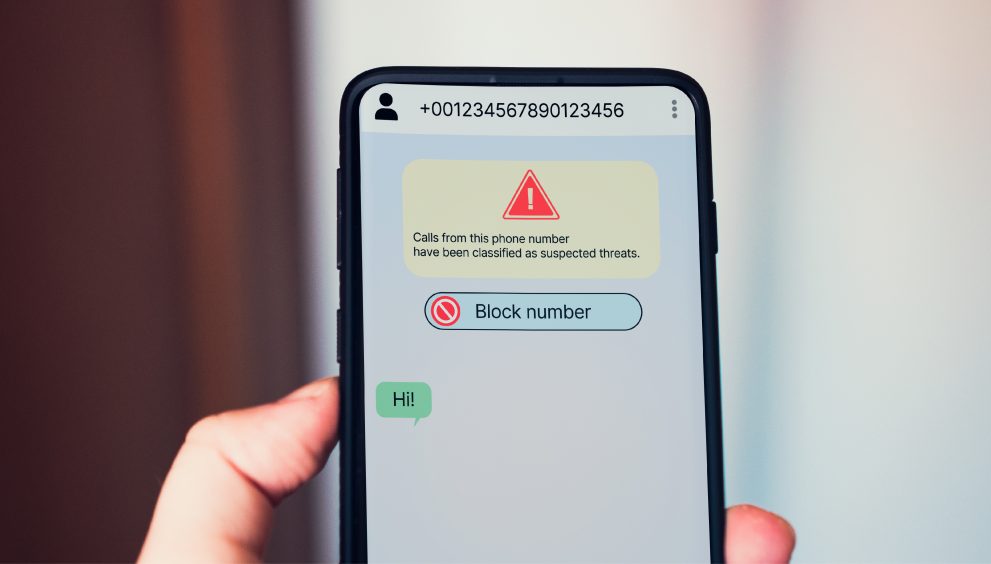One-time passwords (OTPs) are system-generated passwords containing alphanumeric or numeric characters that you can use only once in a limited time frame to authenticate a login or transaction.
Instead of using just passwords, OTPs offer an additional security layer to your accounts to prevent online fraud.
Recognizing this wide OTP usage, cyber attackers have found a way to hack accounts and steal data and money through fake OTP messages.
Let’s understand what fake OTP messages are, how to verify and prevent them, and ways Quick Heal secures you from OTP fraud.
Understanding Fake OTP Messages
Fake one-time password (OTP) messages are fraudulent text/voice messages, push notifications, or emails. Fraudsters send fake OTP messages to digital users on their devices to trick them into sharing their confidential OTPs to steal money from accounts, hack systems, or breach data.
Some common tactics fraudsters use to manipulate users include social engineering, phishing, impersonation, a request to click a malicious link, etc. OTP frauds have increased 3x after the pandemic and have become a common method in online scams.
A real-life incident: Recently, an engineer from Bangalore lost INR 68 lakh in an OTP scam. The fraudster manipulated the engineer into clicking a malicious link and revealing the OTP received to drain his account.
Identifying Fake OTP Messages
Look out for these signs to identify a fake OTP message:
- Urgency: You get a call or text from an unknown number or ID claiming to be someone you know and trust (impersonating). They ask you to take action quickly like sending money due to an emergency or crisis.
- Banking requests: A caller (claiming to be a bank representative) requests an OTP or bank details to solve issues, such as account termination, KYC updates, etc.
- Unknown links/attachments: Someone asking you to click an unknown link to claim a “big prize” or lottery or download an attachment for more information. These links/attachments have malware (capable of reading OTPs), once you download it, your system is hacked.
- Refund requests: Someone claiming to have mistakenly sent money to your account and asking for a refund.
- Silly mistakes: Spelling or grammar mistakes in web addresses, body of the text, etc. For example, a text message could read “Instgram” instead of “Instagram”.
- Irrelevant messages: You receive a text message and OTP indicating an online order you never made.
- International numbers: Calls or texts from unexpected, international numbers.
Risks of Responding to Fake OTPs
If you knowingly or unknowingly respond to a fake OTP message, it could lead to several risks:
- Hackers can gain easy access to your accounts and personal data.
- You may accidentally download malware on your phone that hackers may exploit.
- Indicates a functional email address or phone number for frequent targeting and spamming.
- Full account takeover or data leaks.
So, never click any links, download a suspicious attachment, or trust the caller or messenger blindly. Block a suspicious number or ID right away.
How to Verify the Authenticity of an OTP Message?
Steps to verify an OTP message’s authenticity:
- Identify the sender: Find out if the OTP message is from a known sender by cross-checking their data like previous emails, calls, or messages. Do not engage if they’re unknown.
- Evaluate the content: Consider avoiding generic messages that don’t have a personalized touch (like your name), context, or relevancy to you. Fraud OTP messages also have poor grammar, spelling, and language; a legitimate company won’t do that.
- Check the URL in the OTP message: Look for “https://” that is safe instead of “http://”. The URL must point to a legitimate service provider. If you’ve doubts, contact them directly.
- Use security solutions: Use an SMS filtering tool or Anti-virus software like Quick Heal to detect suspicious OTP texts and emails.
How to Stop Unwanted OTP Messages and Spam?
Consider some practical tips on how to stop unwanted OTP messages and protect yourself from fraud:
- Never share OTPs: Keep your personal data, OTPs, account details, passwords, etc. safe and private. Never share them over a call, on unsafe networks or public Wi-Fi, or write them on paper.
- Identify warning signs in OTP messages: Look for warning signs like unsolicited OTPs, wrong branding, unknown senders, a sense of urgency, forceful language, unrealistic rewards, etc. Don’t respond to them.
- Never click suspicious links/attachments on OTP messages: These links can carry malware or viruses that you may mistakenly download on your system and give hackers access to your accounts or data. Stay away from them.
- Verify OTP message sender: Interact with senders that you know or recognize. Verify them by carefully looking at the sender’s number or email address, content, and text relevancy.
- Block/Report suspicious senders: If you identify a suspicious link, immediately block and report it to authorities, banks, or service providers to prevent future spam.
- Use antivirus software or fake OTP sending apps: Use advanced tools like an OTP authentication service, SMS filters, or antivirus software like Quick Heal Total Security on your phone or desktop to block fake OTP messages.
- Stay informed: Keep yourself, friends, and family updated with recent OTP scams and cybersecurity risks. Also, monitor suspicious behavior continuously and use techniques like 2-factor authentication, perform regular updates, and maintain digital hygiene.
Tools and Apps to Verify OTP Messages
Some tools and apps to detect and prevent OTP spam:
- Google Authenticator: This tool is easy to set up using a QR code and has a simple interface. This fake OTP generator app generates time-based OTPs, supports multiple platforms, and requires no internet connection to work.
- Authy: This cloud-based fake OTP message app for authentication offers amazing features like time-based OTP generation, cloud backups, syncs multiple devices, and locks apps with biometrics or PIN.
- YubiKey: This is a highly secure authentication solution or fake OTP app that offers greater protection from phishing. It supports several authentication protocols like U2F and FIDO2 and requires hardware tokens to generate OTPs. It doesn’t require an internet connection.
Other notable OTP sender apps or authenticators include Microsoft authenticator, Hiya (SMS filter), antivirus software (Quick Heal), and more.
How Does Quick Heal Combat Fake OTP Messages?
Quick Heal offers comprehensive solutions meticulously designed to prevent and combat OTP fraud and safeguard your devices, data, and networks.
If you want to know how to stop unwanted OTP messages, check out these useful Quick Heal Total Security features that protect against OTP scams.
- Multi-layer, real-time ransomware protection with data restores and backups
- Safe browsing, banking, and online shopping to prevent you from downloading malware or responding to fake OTP messages
- Anti-phishing protection to prevent you from visiting harmful sites that can prompt for personal data or fake OTPs
- Spam filtering to scan and block malware or malicious incoming messages and emails containing fake OTPs
- Data breach alerts and safety recommendations
- Behavioral analysis to identify suspicious activities indicating fake OTPs or phishing incidents
Get Quick Heal Total Security and protect yourself from fake OTP messages.
With increasing OTP scams, leading users to lose sensitive data and money to hackers, it’s necessary to verify OTP messages. Use Quick Heal Total Securityto detect and block malicious OTP messages and stay safe. Also, engage only with genuine OTP messages, never click or download suspicious attachments, and stay vigilant against OTP fraud.
Related Products:


